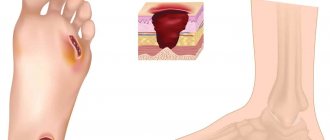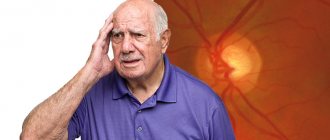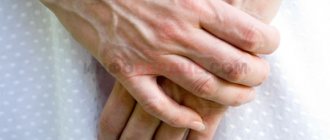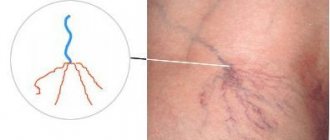The vast majority of people experiencing pain and burning in the back in the area of the shoulder blades consider this problem to be insignificant and attribute their condition to sleeping in an uncomfortable position or muscle strain during work. Some also believe that the pain will go away on its own and that they will not need treatment.
Burning sensation in the back in the area of the shoulder blades
Indeed, poor posture or overexertion during physical activity can cause muscle discomfort in the upper back; it may also be a sign of some incipient disease. Therefore, instead of simply ignoring the pain, you should seek advice from a medical professional.
The shoulder blades are located in the upper part of the back, which is also called the thoracic spine. Before we look at the causes, symptoms, treatment, and prevention of these pains, it is necessary to better understand the anatomy of the thoracic spine.
Structure of the bones of the shoulder girdle
Anatomy of the thoracic spine and the muscles surrounding it
The part of the spine located in the upper back is called the thoracic (or thoracic) spine. The thoracic spine starts at the base of your neck and extends down to your ribcage. Understanding the basic components of the thoracic spine and how they work will help you better understand your upper back problem.
The thoracic spine consists of 12 vertebrae, which are assigned a special numbering: T1-T12. The thoracic vertebrae are designed in such a way that they give the skeleton stability and strength. Stability is important to protect the vital organs located in the chest and also to keep the body upright.
Anatomy of the back in the area of the shoulder blades
There are two anatomical sections that belong to the thoracic part of the spine - anterior and posterior. Accordingly, the front part of the thoracic spine is called the anterior thoracic region, and the back part is called the posterior thoracic region.
The most important structures of the thoracic spine are:
- vertebral segment;
- bones and joints;
- connective tissue;
- nerves;
- muscles.
Thoracic spine
Diagnosis of diseases with burning in the lumbar region
Symptoms in each specific case are studied very carefully, and only a doctor can determine what diagnostic methods will subsequently be used to identify health problems.
First, the expected area of violations is determined, after which a comprehensive examination with a focus on a specific profile is prescribed. In most cases, blood and urine tests are mandatory, and sometimes stool tests (if there is a suspicion of gastrointestinal diseases). Also, if problems with the musculoskeletal system and internal organs are suspected, ultrasound and x-rays are prescribed.
In case of heart problems, an electrocardiogram can be performed when the patient enters a medical facility or during an ambulance call, then the patient is under constant supervision of specialists. In case of injuries and skin rashes, a visual examination of the damaged area of the body is carried out, and additional types of examination may also be prescribed.
Symptoms
As a rule, patients repeatedly turn to a variety of specialists to treat pain between the shoulder blades and in the spine, which they cannot get rid of for a long time.
Possible symptoms
Here are some of the most typical complaints that occur in such patients.
- Pain when trying to take a deep breath.
- Having to rest your shoulder against a wall for minimal pain relief.
- Pain occurs “deep” in the back, deep in the muscles or in the bones.
- Tension and muscle resistance occur when trying to bring your chin closer to your chest.
- It hurts to stretch the muscles between the shoulder blades.
- The desire to twist the shoulders so that there is a click in the spine and the pain goes away.
- Unpleasant sensations are concentrated clearly on the inside of the shoulder blades.
- Feeling of muscle tightness in the upper back.
At the doctor
Are some of these symptoms familiar to you? These are just a few of the complaints that doctors may hear when patients talk about a problem in their muscles, joints or nerves in the thoracic spine.
Products for the treatment of injuries, muscle and joint pain
Diagnosis and treatment
If you consult a specialist with complaints of burning in the joints, the doctor will evaluate all other symptoms and medical history, and, based on the data received, will choose an individual diagnostic regimen. In any case, you will most likely need to have an x-ray of the joint, an ultrasound, and several laboratory tests. If a spinal lesion is suspected, an MRI may be ordered, and specific blood tests will be needed to diagnose systemic diseases.
If you have any questions, ask our specialist! Ask a Question
No one will specifically treat the burning sensation in the joints. Treatment will, of course, be aimed at the underlying disease, which will be determined after a thorough diagnosis. To reduce the inflammatory process and alleviate the patient's condition, non-steroidal anti-inflammatory drugs, classical analgesics and, of course, many physiotherapeutic techniques can be used. Particularly effective in this case:
- local exposure to ultrasound;
- magnetic therapy;
- pharmacopuncture.
Sign up at the MART medical center in St. Petersburg (see map) by calling 8 or leave a request on the website.
Risk factors
Interestingly, teenagers make up a large proportion of sufferers of this type of back pain. Although, of course, it is not uncommon for adults and older people to experience pain in the upper back. Some possible risk factors for developing this type of pain include:
- having muscle or joint pain somewhere in your body;
- during periods of active development and physical change (growth spurts in childhood and adolescence);
- carrying heavy objects, a backpack;
- poor posture;
- excessive and constant stress;
- environmental factors (ergonomics in the workplace).
Poor posture
Table: Causes of pain in the upper back.
II. What are the causes of pain in the shoulder blades?
The most common cause of a burning sensation in the area of the shoulder blades is an inflammatory process in the muscle and adjacent soft tissue. This inflammation can occur for a number of reasons: ● Long-term work at the computer. ● Weakness of the muscles of the cervical and thoracic spine. ● Stereotypical, i.e. long-term repeated movements of the upper limbs (in English literature this condition is called overexertion injury) ● structural changes in the cervical and thoracic spine, leading to narrowing of the spinal canal and intervertebral foramina through which the roots of the spinal nerves pass (intervertebral hernia, arthrosis of the intervertebral joints and their enlargement due to inflammatory changes, thickening of the ligamentum flavum, etc.) ● sudden sprain of muscles and ligaments, for example in a traffic accident or playing sports - whiplash injury. Less common causes: ● Osteoporosis. ● vertebral fractures. ● infectious process in the vertebral bodies (for example, damage to the vertebral bodies by tuberculosis). ● herpes zoster (especially in people with immunodeficiency and people over 60 years of age). ● tumors of the spine and metastases to the vertebral bodies (especially in people with a history of cancer). ● Scheuermann-Mau disease - changes in the bone tissue of the vertebral bodies, leading to curvature of the spine. ● Ankylosing spondylitis is a disease of an autoimmune nature that leads to fusion of vertebrae and, as a consequence, immobilization in this segment of the spine. IMPORTANT! Consultation with a specialist is necessary . Do not think that pain in the thoracic spine, in particular in the area of the shoulder blades, is associated only with the structural elements of the spine. Periodically, such pain occurs in various diseases, such as: myocardial infarction, coronary heart disease, pleurisy, diseases of the gastrointestinal tract (stomach and duodenal ulcers, hiatal hernia, reflux disease), etc. Is there any reason for concern ? In most cases the answer is no! With timely treatment and elimination of the cause that caused the burning sensation in the interscapular area, a fairly quick and lasting result can be achieved. But there are a number of warning signs (red flags) that you should pay attention to if you have chest pain. Red flags for a burning sensation in the area of the shoulder blades: ● recent serious injury (for example, an accident or a fall from a height) ● pain that first appeared before the age of 20 years and over 50 years ● a history of oncology ● pain arising from a minor injury, when lifting heavy objects or falling from your own height ● taking glucocorticosteroids (dexamethasone, prednisolone, etc.) for six months or more, which leads to the development of steroid osteoporosis ● HIV infection and conditions associated with immunosuppression ● morning stiffness in the spine and joints ● periodic rise in temperature and loss of body weight for no apparent reason ● pain increases in intensity and changes in character over time ● is accompanied by curvature of the spine and the appearance of local visible changes in the area of pain ● numbness, tingling, a crawling sensation and/or decreased muscle strength in the upper and lower extremities ● involuntary urination and defecation or difficulty with them
Treatment options for pain between the shoulder blades
Treatment of pain between the shoulder blades depends on the severity and external condition. Some of the treatment options include exercises or exercises that you can do at home to help you manage the pain.
If you want to learn in more detail what causes and how to treat if the spine hurts between the shoulder blades, and also consider how diagnostics are carried out, you can read an article about this on our portal.
How to get rid of pain in the shoulder blades
After a full consultation with your doctor and a thorough diagnosis of the source of your pain, you can move on to some of these remedies.
- Dream. This implies not only a sufficient duration of good rest, but also a careful selection of the mattress. Sleeping on a bad mattress can actually contribute to back pain. If you find that you are consistently not getting enough sleep and can't point to any other external factor, try changing your mattress.
How to choose a mattress - Stretching . To be more precise, the cat pose from yoga practice will best help with pain between the shoulder blades. It involves rounding the shoulders while arching the spine back to stretch the upper back. The best time to stretch is after a hot shower because the muscles will be the most pliable.
- Pose. Good posture means less stress on your spine.
Correct posture while standing
Correct back position while running - Warm . Applying dry heat is great for relieving tension in the affected area of the back. A heated towel or heating pad should do the trick.
Prices for orthopedic shoes
First aid for burning in the back
A burning sensation in the lower back can occur at any time, so you need to know how to alleviate the condition of a person facing a similar problem. Before doctors arrive or contact specialized specialists, you can try to understand why your lower back is burning, but you still shouldn’t take drastic actions. To get started you need:
- Take the most comfortable position when pain is minimal and the back muscles are relaxed. One option is to straddle a chair and rest your chin on your arms crossed on the back. The fetal position also helps relieve pain. In any case, you need to choose the option that will be as comfortable as possible.
- You can take painkillers, which, of course, will not solve the problem, but will partially relieve the burning sensation and relieve acute pain.
- Sometimes, when the lower back pulls and burns, massage is an effective remedy. But there is no need to be zealous, since in case of problems with the musculoskeletal system, intense impact on the problem area can only worsen the situation. Light stroking and patting will be enough to relieve the burning and itching.
First aid in such a situation is aimed at alleviating the person’s condition to such an extent that he can independently get to a medical facility. If there is no improvement, the burning sensation and pain intensify, you should call an ambulance. You need to remember that you shouldn’t put off talking to your doctor until later, because you can’t figure out for sure why your lower back is burning on your own. The unpleasant itching may hide serious problems that sometimes require surgical intervention.
Causes of pain, itching, burning in the vagina
There are three groups of reasons
that cause discomfort in the vagina:
- Gynecological diseases;
- Non-gynecological diseases;
- External and internal factors;
Inflammation of the mucous membrane is caused by the development of pathogenic microflora in the genitals, which causes itching in the vagina. The most common infections include gardnerellosis, candidiasis (thrush), etc. This condition is called bacterial vaginosis, and it often becomes a consequence of intestinal dysbiosis.
Pain, itching, burning may be symptoms of an STI
(sexually transmitted infections):
- chlamydia (yellowish discharge with a fishy odor);
- trichomoniasis (excessive foamy greenish discharge);
- genital herpes, etc.
Itching in the vagina can be caused by allergies, for example to contraceptives or sanitary pads. Lack of genital hygiene, tight underwear, and unnecessary douching disrupt the balance of vaginal microflora and cause itching.
External factors
that can cause itching:
- overheating or hypothermia;
- mechanical impact (friction against laundry);
- mechanical damage to the mucous membrane (for example, during rough sexual intercourse);
- emotional stress;
- stress, feeling of fear.
In any case, whatever the reason, if you have these symptoms, you should consult a gynecologist.
Gynecologists in Kazan use the following methods of treating gynecological diseases:
- Drug treatment . Prescribed in accordance with test results.
- Local treatment . Sanitation of the vagina followed by application of a tampon with a medicinal drug, incl. Ultrasonic sanitation with the Gineton apparatus.
- Physiotherapy . Modern Androgyn and Mustang equipment is used, which are successfully used in the complex treatment of inflammatory diseases, hormonal disorders, as well as recovery in the postoperative period.
- Pharmacopuncture . Introduction to acupuncture points of medicinal substances that are indicated for various diseases (inflammatory, hormonal disorders, etc.).
- Ozone therapy
. Intravaginal and intravenous administration of drugs enriched with ozone contributes to the development of a powerful antioxidant effect, which can successfully cure inflammatory diseases, improve the immune system and reactive capabilities of the body. - Hirudotherapy . Widely used in the treatment of diseases such as endometriosis of the uterus and ovaries, inflammatory diseases, hormonal dysfunctions, infertility, etc.
IV. Let's take a closer look at the most common cases of pain in the shoulder blades.
What do such causes of pain as long-term computer work, weakness of the cervical and thoracic muscles, and stereotypic movements of the upper limbs have in common?
As a rule, the basis is an increase in muscle tone, i.e. muscle-tonic syndrome and myofascial pain syndrome (MFPS). Myofascial syndrome is characterized by the presence of trigger points, which are a tangle of individual contracted muscle fibers, against the background of which the bulk of the muscle affected by the triggers becomes weaker. This occurs due to the reflex response of our central nervous system, which receives information that the muscle fibers in the trigger zones are in increased tone, and since an excessive increase in tone in the muscle is energy-consuming for the body, it gives the command to weaken the muscle. A logical question arises: how can such opposite conditions as hypertonicity and weakness be combined?
In this image we see the classic pose of a person working at a computer. With this position of the body, the following biomechanical changes are observed: 1. The shoulder blades and shoulders shift forward; the muscles of the interscapular region are weakened (middle and lower portions of the trapezius muscle, rhomboid muscles), but at the same time the pectoral muscles are shortened. 2. There is an increase in thoracic kyphosis (i.e., a stooped back) 3. Compensatory hyperextension of the cervical spine - weakness of the muscles of the anterior group of the neck, and hypertonicity of the extensors of the neck and head. That is, when any muscle group is weakened, the tone in the antagonist muscles reflexively increases. Such biomechanical changes are called upper cross syndrome. In the clinical picture, in addition to burning pain in the area of the shoulder blades, such patients may also experience a feeling of stiffness, discomfort in the cervical spine and headache. The pain caused by this condition responds very well to treatment using soft manual therapy techniques; a course of exercise therapy with further exercises at home is also a prerequisite for achieving a lasting result. The method of acupuncture has proven itself well; this method helps to cope with muscle strain in the cervical-collar area and relieve psycho-emotional stress.
Consider another cause of burning pain in the area of the shoulder blades, namely degenerative-dystrophic changes in the cervical spine (osteochondrosis, spondyloarthrosis, spondylosis) and disc herniations. The muscles of the upper thoracic region receive innervation from the cervical roots of the spinal cord. Thus, the presence of dystrophic changes in this area leads to the development of myofascial syndrome in the rhomboid muscle, the levator scapulae muscle and the upper portion of the trapezius muscle.
Domestic authors have found that damage to the disc, joints and ligaments of the cervical spine at the level of C4-C5, sometimes C5-C6, leads to the development of MFPS in the rhomboid muscle (PRESENTED IN THE FIGURE). When the rhomboid muscle is affected, the pain is localized along the inner edge of the scapula, sometimes spreading to the shoulder girdle (the area of pain distribution is indicated in red), but never spreads to the cervical region, unlike the pain coming from the levator scapulae muscle and the upper portion of the trapezius muscle. In addition to pain, crunching and clicking sounds are often observed when moving the shoulder blade, but the movements themselves are not limited. The usual position for such patients is a slouched back.
Damage to internal organs, accompanied by referred pain in the shoulder blades. Heart. With ischemia (lack of blood supply) of the heart muscle, a symptom such as burning pain, localized in the area of the left shoulder blade, left arm, neck and lower jaw, is often observed. Most often, pain during myocardial ischemia occurs during physical activity, in contrast to myofascial pain syndrome, which manifests itself at rest and is less intense. Pain during myocardial ischemia is often accompanied by panic and fear of death. As you can see, pain in the thoracic region can be caused by a variety of pathological conditions that require careful collection of complaints and medical history, differential diagnosis and exclusion of the most dangerous diseases first. At the same time, you should not worry too much about it; in the vast majority of cases, the pain is benign in nature and, with the right tactics, responds well to treatment.
III. Is it necessary to conduct additional research methods?
At the appointment, the doctor, after assessing your condition (clinical picture) and medical history, makes a conclusion about the need or lack thereof for additional research methods. In most cases, if the pain syndrome is benign, the diagnosis is made based on the patient’s clinical picture. If there are “red flags”, depending on the conditions that the doctor wants to exclude, additional research methods may be prescribed, such as a blood test for inflammatory markers, tumor markers, MRI, computed tomography, radiography, or referred for consultation to a specialized specialist.










